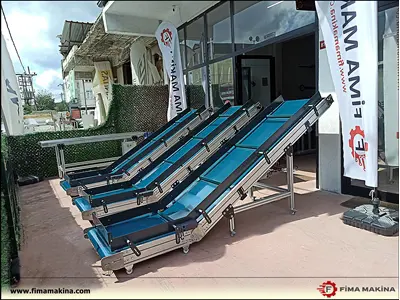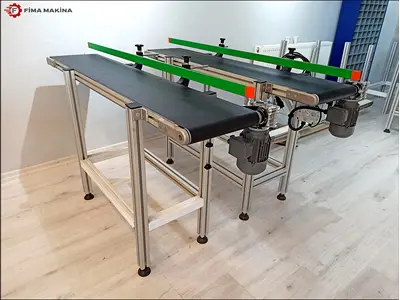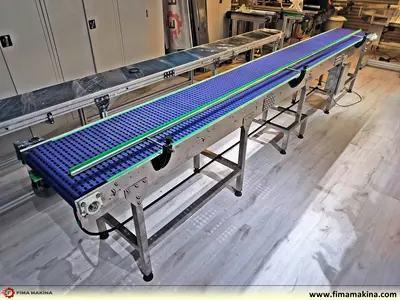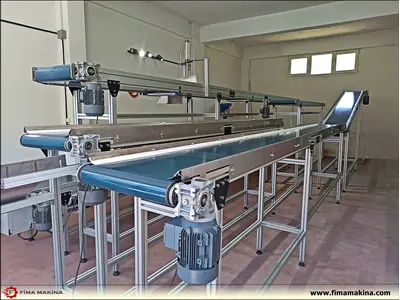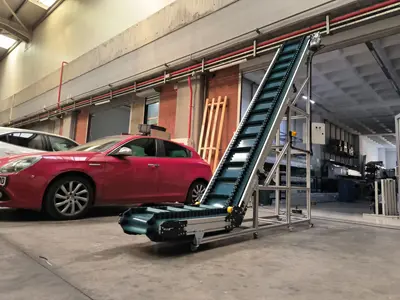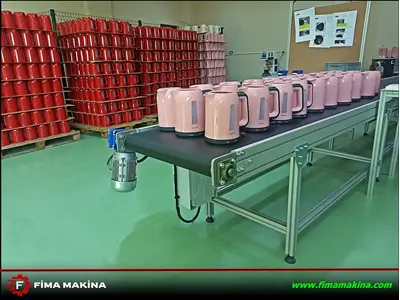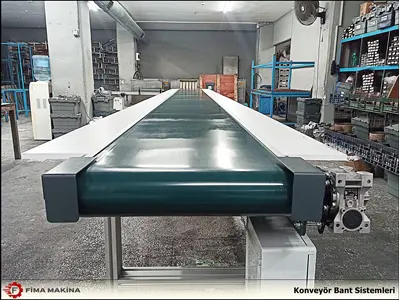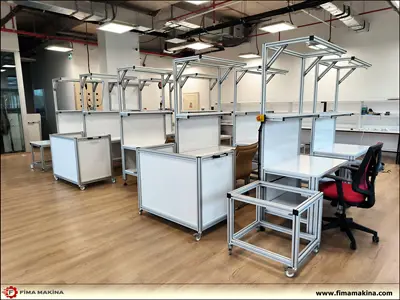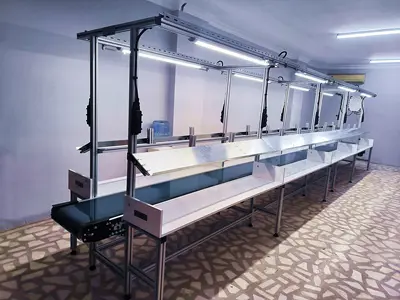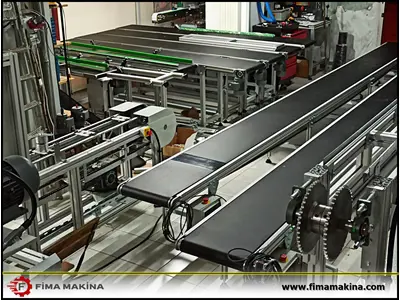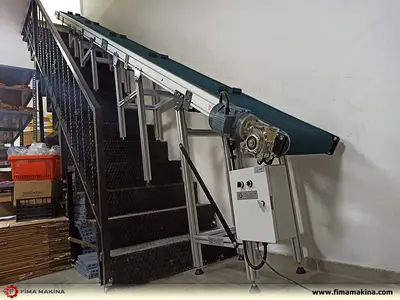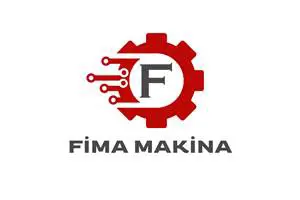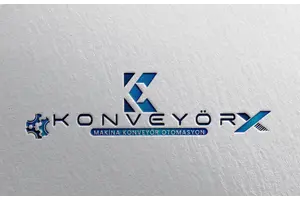Transfer Conveyor
Transfer conveyor is a transportation system that allows materials or products to be transferred from one point to another in industrial environments. These conveyors optimize processes by moving products from one location to another, increasing efficiency in production processes.
Transfer conveyors can vary in shape, size, and characteristics according to different industrial applications. They can have flat, inclined, or declined surfaces to speed up and organize the transportation of materials. Additionally, they can be designed based on different carrying capacities and types of materials.
These conveyors are commonly used in production lines, storage facilities, packaging lines, logistics centers, and material handling systems. Transfer conveyors play an important role in enabling products to move from one stage of a process to another, organizing material flow, and enhancing production efficiency.
What Are the Types of Transfer Conveyors?
Transfer conveyors come in various types to meet different material transportation requirements in industrial applications.
Belt Conveyors: Used to transport materials on a flexible belt. They usually operate on flat or slightly inclined surfaces and are popular in food processing, mining, and packaging industries.
Chain Conveyors: Use a chain mechanism to transport heavy loads. They are preferred in heavy industrial applications, especially in the automotive and metal processing sectors.
Roller Conveyors: Transport materials by rolling them on cylinders placed at regular intervals underneath. Storage and distribution centers heavily use these types of conveyors.
Modular Conveyors: Offer customizable structures by combining different modules. This allows easy adaptation to various production line arrangements.
Pneumatic Conveyors: Use air pressure to transport granular or powdered materials along pipe lines. They are used in the chemical and food industries, especially for transporting materials in powdered form.
Vibrating Conveyors: Advance materials through vibration. These conveyors are used in mining and recycling sectors, especially during crushing and sorting processes.
Turntable Conveyors: Transport materials by rotating them at a certain angle, allowing materials to move in different directions. This feature is useful when materials need to be directed to different processing stations in assembly lines.
In Which Industries Are Transfer Conveyors Commonly Used?
Transfer conveyors are flexible and efficient transportation systems used in a wide range of industries.
- Manufacturing and Assembly: Transfer conveyors are commonly used to transport materials and semi-finished products between different production lines. They are ideal for efficiently transferring components to assembly stations in sectors such as automotive, electronics, and heavy machinery manufacturing.
- Food Processing: Transfer conveyors made from materials compliant with food safety and hygiene standards are used to transport raw materials and processed products in food processing facilities. These conveyors also play an effective role in packaging, labeling, and distribution processes.
- Packaging and Logistics: Distribution centers and warehouses rely on transfer conveyors to transport goods between different packaging lines or from storage areas to loading zones. These systems are ideal for moving materials quickly and efficiently.
- Pharmaceutical Industry: Pharmaceutical production requires the precise and contamination-free transfer of active ingredients, coatings, and other materials between different processing lines. Transfer conveyors are often preferred to meet these sensitive transportation requirements.
- Airports: Transfer conveyors used in baggage handling systems facilitate the safe and fast transportation of luggage from aircraft to terminals or vice versa.
How Do Transfer Conveyors Optimize Material Handling Processes?
Transfer conveyors enhance efficiency in industries by optimizing material handling processes in various ways.
- Increased Efficiency: Transfer conveyors move products and materials quickly and continuously. This reduces the need for manual handling and ensures faster and more regular workflow, thereby enhancing overall efficiency of the production line.
- Reduced Labor Requirements: Automatic transfer conveyor systems replace manual handling tasks to cut labor costs. These systems can transport large quantities of materials with a small number of operators, allowing businesses to save on labor expenses.
- Decreased Error Rates: Automated conveyor systems minimize human errors. Especially in the transportation of sensitive materials and products, errors like misplacement or dropping can be avoided.
- Space Utilization Optimization: Transfer conveyors allow more efficient use of available space. Designs like vertical and spiral conveyors help save space by utilizing height as well.
- Flexibility: Modern transfer conveyor systems can be designed to easily adapt to changing production needs. With modular structures, the system can be expanded or reconfigured as needed, making it easy to handle various products or changing processing volumes.
- Safety: Conveyor systems safely handle potentially hazardous operations like transporting heavy loads. This helps reduce workplace accidents and injuries.
What Are the Prices of Transfer Conveyors?
The prices of transfer conveyors vary depending on various factors and generally differ based on the specifications, dimensions, carrying capacity, and manufacturer of the conveyor to be used. Additionally, factors such as assembly, transportation, and extra features can also impact the price. The average price of a transfer conveyor can range from {price range}.
The price of a standard-sized and featured transfer conveyor typically starts from thousands of dollars and can go up to tens of thousands of dollars. However, prices can be higher for more complex or customized transfer conveyors.
To determine prices, it is best to contact several manufacturers or suppliers considering your needs and budget and get quotes. Additionally, choosing the right conveyor by taking into account user reviews and references is crucial. In any case, comparing various options to find a suitable solution based on your budget and requirements is important.
To meet your need for a new or used transfer conveyor, you can purchase from reliable manufacturers or authorized suppliers through makinaturkiye.com and also get support from authorized services.

